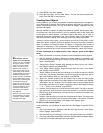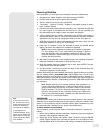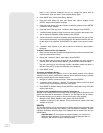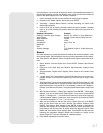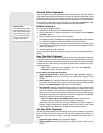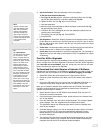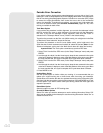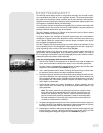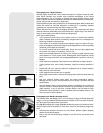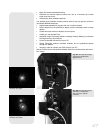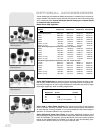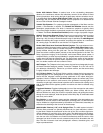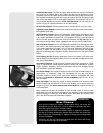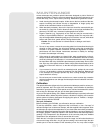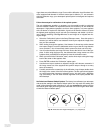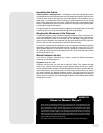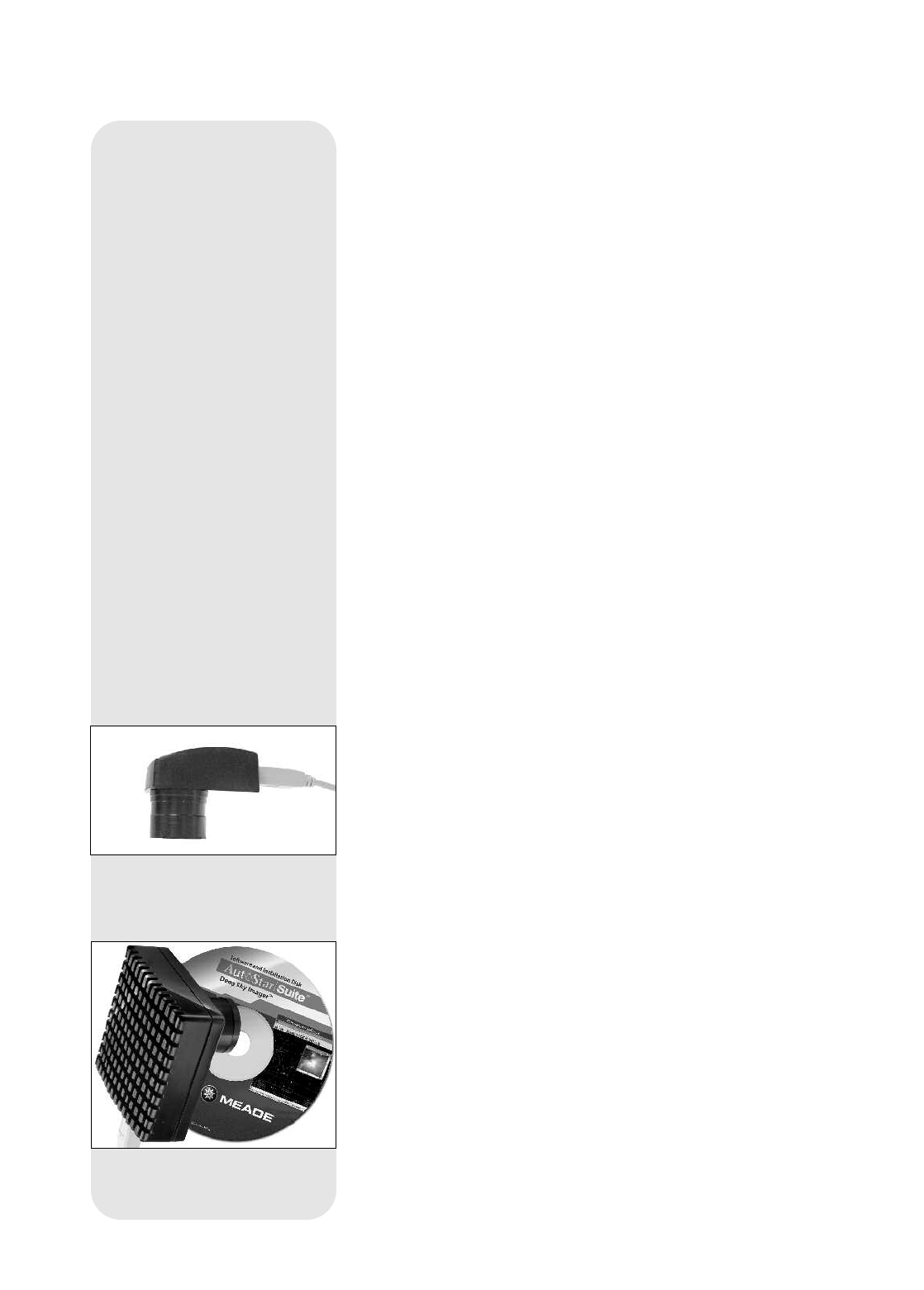
46
Photograph
y with a Digital Camera
Although digital camer
as still cannot match the quality of images provided by tradi-
tional 35mm cameras, they provide some significant advantages to the casual
astrophotographer: You do not have to develop the images (instant images), lower
costs, computer and internet readiness. And because unwanted photos are easily dis-
carded, they provide the freedom to experiment.
Digital cameras present some problems for the astrophotographer: Many models have
lenses that cannot be removed, difficulties in attaching to a telescope, possible
vignetting, lack manual focusing and shorter exposure times.
Shorter exposure times is one of the biggest drawback. Long exposures with digital
cameras introduce undesirable noise and artifacts into a digital image. This limits the
r
ange of astro images to the Moon, planets and bright stars.
Some tips for better photos:
• If you cannot remove the lens to your camera, look for a commercially available
digital T-adapter. New solutions for attaching a digital camera to a telescope are
becoming available as time goes by.
• If the camera is not directly coupled to the eyepiece, keep it as close to the eye-
piece as possible and center the image to be photographed to minimize vignetting
(darkening of the edges of the photo).
• Try to block ambient light (from street lights, house, etc.) from the eyepiece and
the camera with a piece of cardboard, a screen, etc.
• Keep extra (charged) batteries on hand for your camera as digital cameras often
drain batteries in a short period of time. Rechargeable Lithium batteries provide
power for a longer period than non-rechargeable batteries. If practical, use an AC
adapter.
• Avoid short-focus eyepieces. They present many difficulties for digital cameras.
• If using manual focus, set to infinity. Otherwise, using the camera's autofocus is
OK.
• Experiment with your camera's exposure, brightness and /or contrast settings.
Keep notes for future reference.
• Clean eyepieces and camera lens as needed.
• Many digital cameras have a manual ISO setting. Short exposures times work the
best.
• Use your camera's highest image quality and lowest compression settings.
Although this fills up your camera's memory more quickly, it produces the best
quality photos
.
•
Use the camer
a's timer or remote shutter release (if available for your camera) to
minimize vibration. Wireless shutter releases may be available for some model
digital cameras. If you do not have a shutter release, use the camera’s timer
(sometimes called “self-timer”), which is available with most digital cameras. The
timer may also minimize vibration.
Photography with Meade’s AutoStar Suite™
The AutoStar Suite with Meade LPI™ (Lunar Planetary Imager) or Meade Deep Sky
Imager
™ turns your Meade RCX400 telescope, AutoStar and PC into even more pow-
erful and easy-to-use astronomical instrument.
LPI (
Fig. 35) and Deep Sky Imager (Fig. 36) combine the power of an electronic astro-
nomical imager with the simplicity of a web cam. Check out the following imager fea-
tures:
• Achieve great results the first time out on the Moon, planets, brighter deep-sky
objects and terrestrial targets.
• Easy to use with real-time display of object on your PC screen. Just center, focus
and shoot.
Fig. 36: The Deep Sky Imager.
Fig.
35:
The Lunar Planetar
y Imager
.



